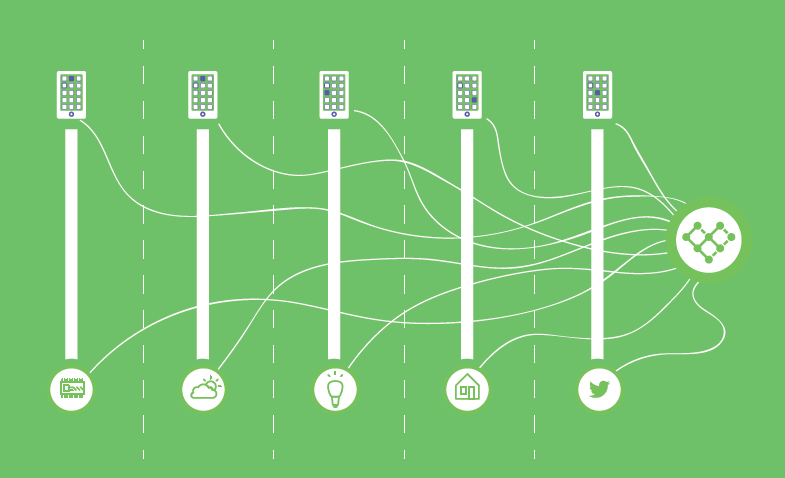The advances in the world of IoT
Currently, there are over 8.4 billion connected devices in the world with 5.5 million new devices being connected every day. (Gartner, 2017) This is expected to grow to between 20 and 200 billion within the next five years. The promise of Internet-of-Things doesn’t end at just connecting the devices to the internet. It is just the first step.
Advances in RF technology and low power computing will bring Internet-connectivity everywhere. Advances in Big Data and machine learning will unlock new business opportunities and models. The possibilities are nearly endless, but they all still lie quite out of reach from the direct consumer.
Limitations
The current situation is that there are many devices with some form of connectivity to the internet, but they are still (mostly) incapable of communicating with one another without vast programming skills of the consumer. Currently, the consumer needs an app for everything, adding to dozens of apps over the coming years. The consumer doesn’t want to find his phone and start an app for simple tasks such as turning on the light, but rather have the light turn on according to a rule or condition such as coming home. The smart device should allow for cooperation in the way the consumer wants. Operating devices that have become connected should not get more cumbersome, but less.
The device manufacturers, however, can’t possibly deliver omni-potent apps. There is not one standard or ecosystem currently. Their main focus is to deliver a smooth user experience, which is difficult when depending on third parties. Although there are various devices which allow inter-connectivity with other devices (such as the Flic button and the Philips Hue (Shortcut Labs Sweden, 2016)), these implementations are often limited.
IoT apps as a solution
IoT mobile apps act as the middleman. Consumers can connect their devices, apps and services and IoT apps will allow them to work together. Depending on the functionality of the device, app or service, it can work as a condition or an action. Examples of such apps include Triggi, IFTTT, Stringify and Yonomi among others. Generally, these apps allow the combination of one or more of conditions to trigger one or more actions.
By integrating with one of these apps, device manufacturers will immediately expand the capabilities of their devices. In turn, by being connected to such an app, users can use devices beyond its normal scope of functionalities. Both are achieved without any direct investments. You can control your lights, program actions, send an email at a specified time. It works on a basis of ‘if, then’ statements. If you are interested in IoT and would want to start automatizing your life, check this out! Especially Triggi is up and coming ?
Sources and further reading:
https://triggi.com/
https://www.gartner.com/newsroom/id/3598917

